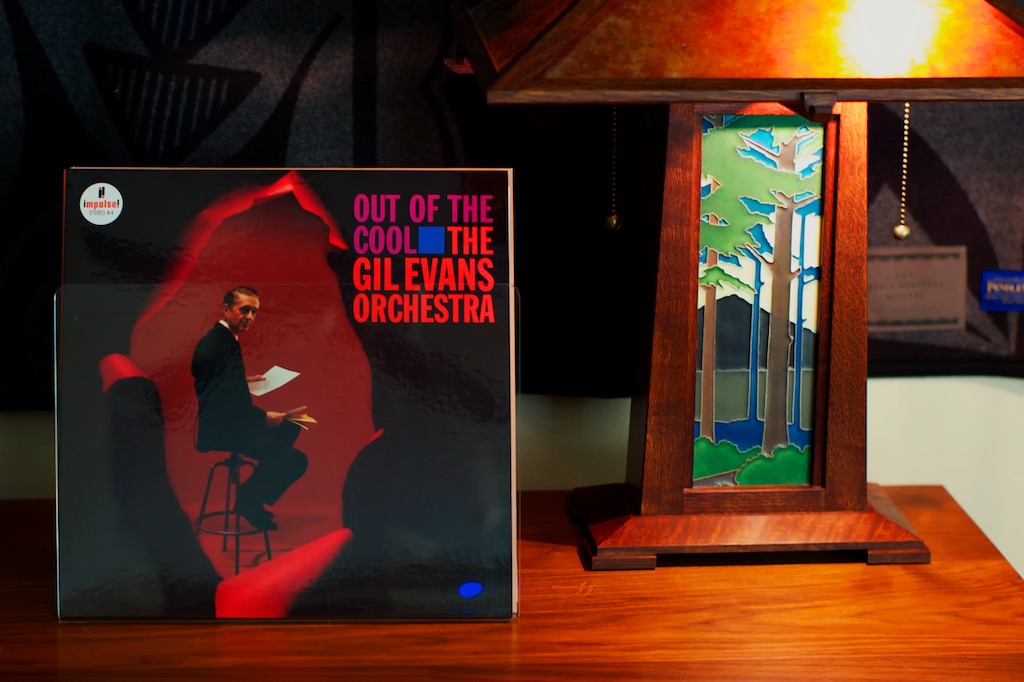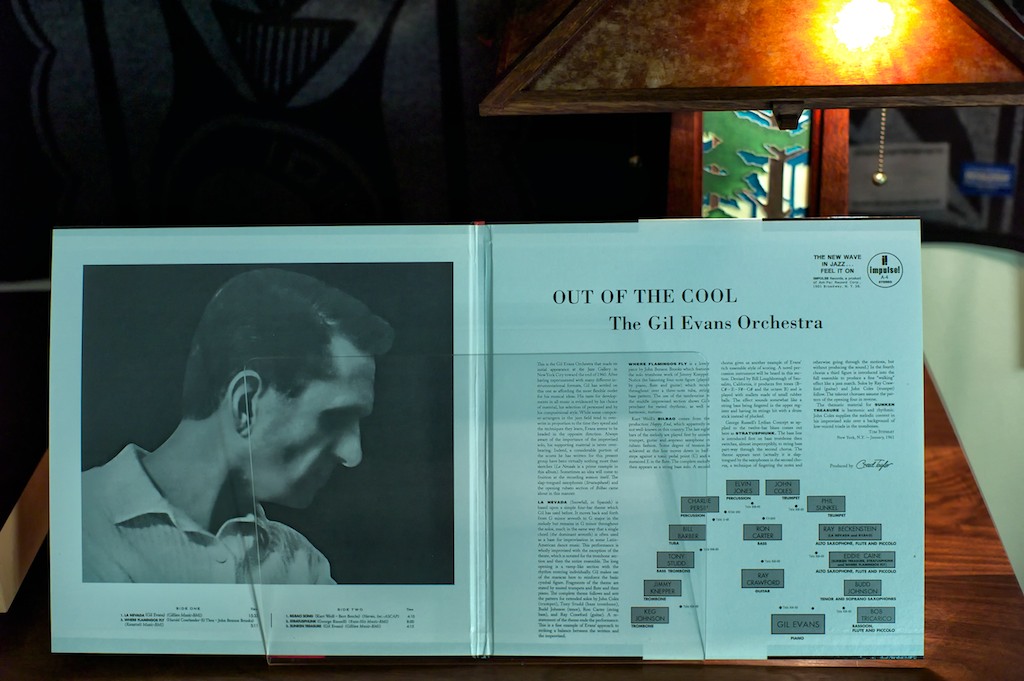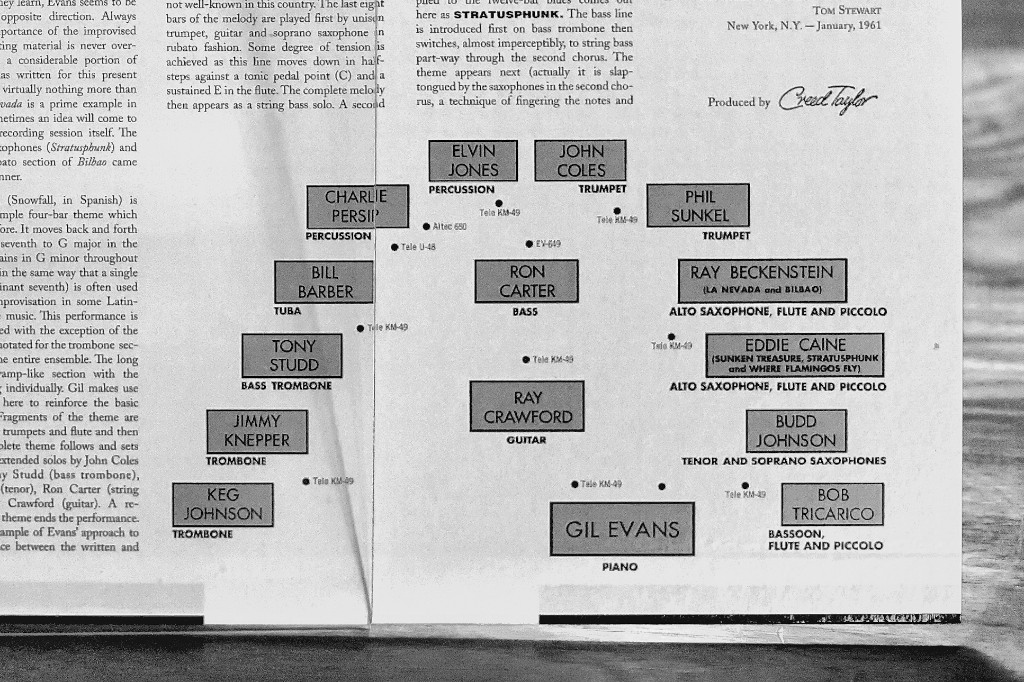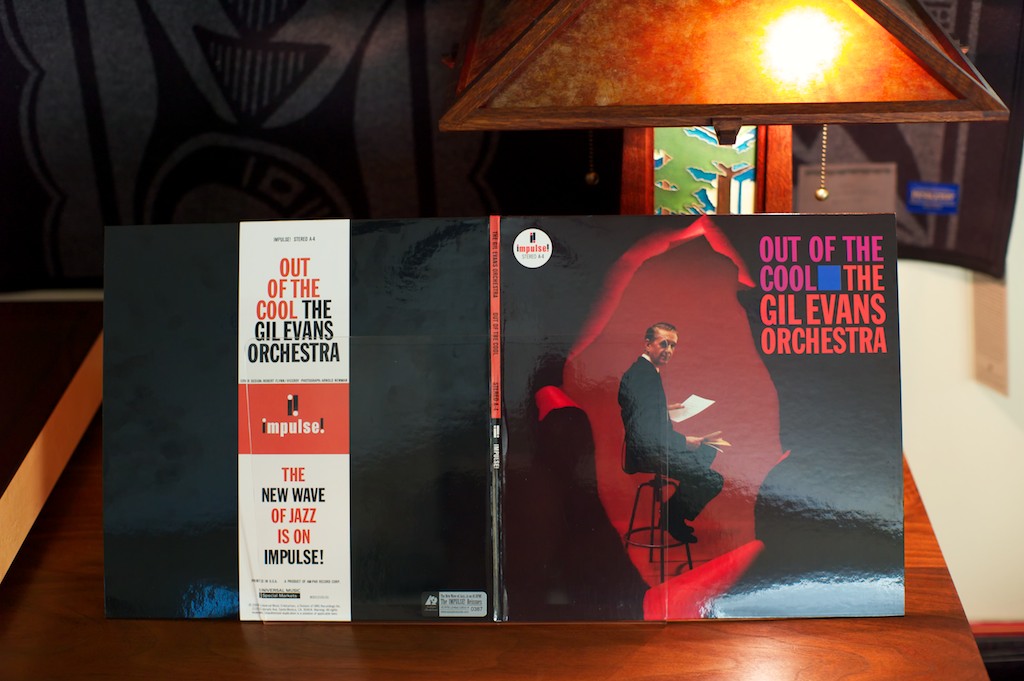I've been going nuts buying records lately because my system is in one of those cherished states where it makes the music come alive in an almost supernatural manner.
A case in point is the Analogue Productions 45 RPM reissue of The Gil Evans Orchestra's Out Of The Cool (above). Out Of The Cool is one of the twenty-five Impulse jazz titles that Analogue Productions has reissued and it is absolutely fantastic!
The guys over at Acoustic Sounds had a simple formula when producing the 25 Impulse Reissues: "Incredible jazz records + the original analog master tapes + cut at 45 RPM + mastered at AcousTech Mastering + pressed on two 180-gram virgin vinyl LPs = THE ULTIMATE LP REISSUE!" Acoustic Sounds isn't kidding, they really did cherry pick the Impulse! catalog for some of the greatest titles in jazz history, and did a fantastic job of producing the albums.
The Gil Evans Orchestra Out of the Cool album on Impulse! is one of my all-time favorite jazz albums (above in gatefold view) because the music is magnificent! (and it has other distinctive merits which I'll discuss in more detail in a moment)
Inside the gatefold you'll find a nice map of the Gil Evans Orchestra (enlarged below) with the instruments they're playing (and the microphones used to record them), which makes this a really great recording for audiophile-style fun like picking out instrumental images from left to right on the soundstage, and seeing if you can hear all the 'instrumental layers' back into the soundstage's depth. You'll notice if you listen carefully that not all of the images are in the same positions on the recording's soundstage as they are on the orchestra map.
Out of the Cool was originally released in 1960, and features Gil Evans on piano; Billy Ray Barber on tuba; Raymond Beckenstein on flute, piccolo, and alto saxophone; Eddie Caine on flute, piccolo, and alto saxophone; Ron Carter on bass & trombone; Johnny Coles on trumpet; Ray Crawford on guitar; Budd Johnson on alto saxophone, soprano saxophone, and tenor saxophone; Keg Johnson on trombone; Elvin Jones on percussion & drums; Jimmy Knepper on trombone; Charlie Persip on percussion & drums; Tony Studd on trombone; Phil Sunkel on trumpet; and Bob Tricarico on flute, bassoon, and piccolo - what a lineup! Wait until you hear Tricarico's bassoon or Barber's tuba - you'll flip out at the adrenalin rush!
As an aside, Out of the Cool is particularly good for evaluating the performance of a Hi-Fi system (or new components) because of the album's great music, the extremely good production values used for the original recording sessions (Rudy Van Gelder's studio in Edgewood Cliffs), the broad range of instruments used for the recording (and the orchestra map!), not to mention the incredibly inspired musicianship.
If you've been following along, you know that lately in my audio reviews for Positive Feedback Online I have been breaking out my review criteria into three categories:
Firstly, the ability of a piece of equipment to portray the classical audiophile-style non-musical structural features encoded in recordings like imaging, soundstaging, soundspace, transparency, and the like.
Secondly, the ability of a piece of equipment to have ‘a nearness to the truth’ when portraying the musical structural features encoded in a recording like timbre, tone color, tempo, melody, harmony, rhythm, dynamics, and loudness.
Thirdly, the ability on a piece equipment on those emotional structural features used by musicians to evoke an emotional response in their listeners, which translates to a components ability to evoke an emotional response in us while listening to a recording.
You're probably asking, "What are the structural features of music that contribute to evoking an emotional response?" The good news is that you're already familiar with them even if you can't name them off the top of your head, because you've all felt them! Tempo is usually considered to be the most important factor by musicians for evoking an emotional response, but certainly dynamics, loudness, melody, and tonality (major or minor) play an important role as well.
Now it is true that success in any one of those three categories does not generally make for an amazing Hi-Fi component, but it is a useful way to think about gauging relative performance. A component that excels at reproducing non-musical structural features may be interesting intellectually, but if doesn't also portray musical structural features with a certain sense of realism and stimulate an emotional response, you'll quickly become tired of it. So it comes down to artfully balancing all those structural features encoded on a recording to create a Hi-Fi system or component that really pulls you into the music.
That's where The Gil Evans Orchestra's Out of the Cool album is so brilliant for evaluating performance of a system or component, as the extremely good production values used for the original recording sessions at Rudy Van Gelder's studio in Edgewood Cliffs makes it extremely easy to pick out all of the classical audiophile-style non-musical structural features encoded in the recording like imaging, sound-staging, soundspace, and transparency.
It doesn't hurt that Out of the Cool also includes a map of the orchestra so you can grab your album to figure out what's playing where on the sound-stage while you're listening - it's a great way to learn more about instrumental timbre! Out of the Cool will make you work at it too because not all the images on the recording's soundstage are located like they are on the map. The guitar is to the right, and not in the center on La Nevada, for example. The muted trumpet shows up on the left instead of the right ... see if you can find the other anomalies.
So you've probably guessed by that another useful trait of Out of the Cool is that its great for evaluating whether your system / component has ‘a nearness to the truth’ when portraying the musical structural features encoded in a recording like timbre, tone color, tempo, melody, harmony, rhythm, dynamics, and loudness.
Take the song La Nevada where Gil moves back & forth between G minor seventh and G major, and stays in G minor thru the solos: this is perfect for getting a feeling how well a system or component highlights the major or minor tonality. Listen carefully ... can you hear the changes easily? If so, you're system's doing some good things for your music.
Also, take a listen to Where Flamingos Fly to get a feel for how well your system does on varied rhythmic and harmonic textures, or see how well your system presents the melody line on Ron Carter's bass solo in Bilbao. There's lots of good things to listen for musically in this album, just read through the album notes for examples and see if you can pick them out of the music.
To top things off try listening to those elements that create an emotional response in Out of the Cool by listening for how tempo, dynamics, loudness, melody, and tonality (major or minor) stimulate your emotions and draw you into the music.
Most of all enjoy the music on this amazing jazz album, and if you don't have it in your collection already be sure to get it!
From my home to yours - happy listening and thanks for stopping by!































